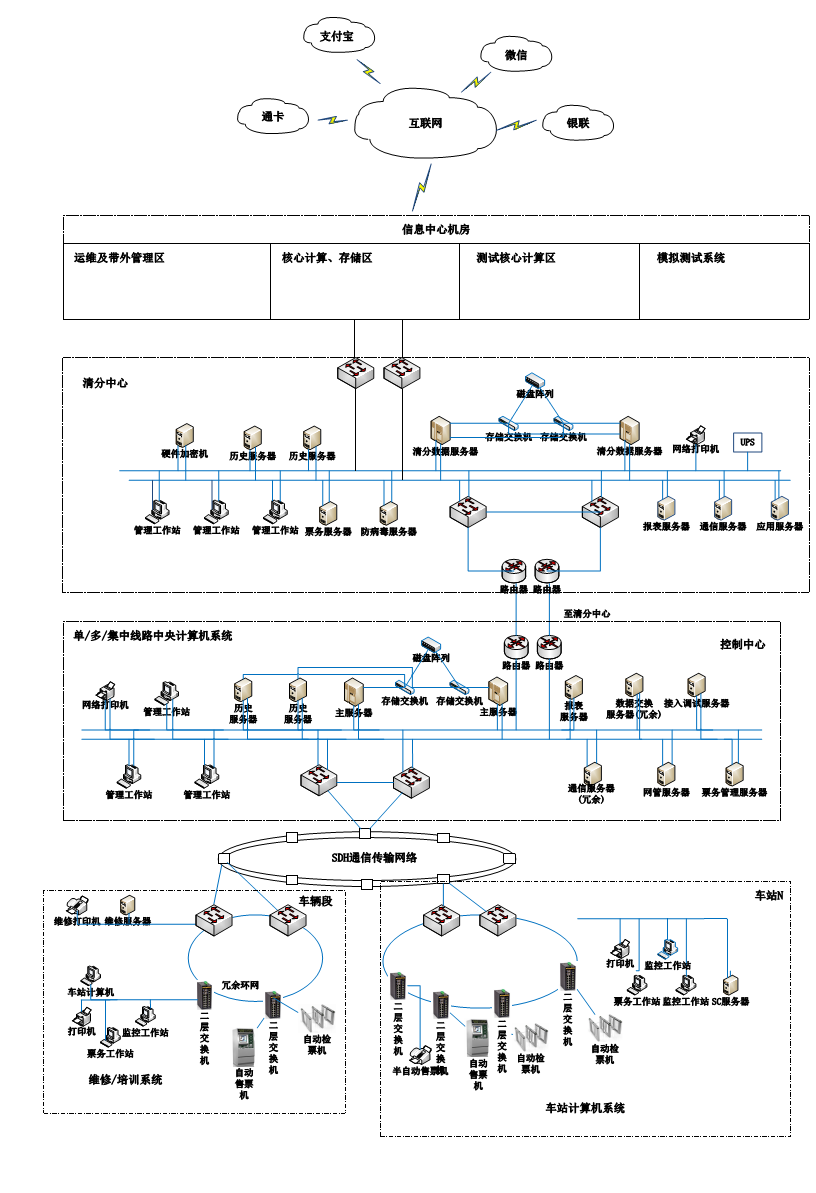AFC (Automatic Fare Collection) automatic ticket inspection system is based on computer, communication, network, automatic control and other technologies to realize the entire process of rail transit ticketing, ticket inspection, billing, ging, statistics, clearing, management, etc., including clearing Sub-system (ACC), line central computer system (LC), station computer system (SC), station terminal equipment (SLE) and ticket card media are the 5 most. The hierarchical structure is based on the fully enclosed operation mode, based on the taxi ging model, using the non-contact IC card as the composition principle of the ticket medium, and is divided according to the respective functions, management functions and locations of the equipment and subsystems at each level.

1. High reliability and high availability requirements
Because the data network needs to provide 7×24 hours of uninterrupted service, high availability and high reliability of the system are a very important goal, including consideration of network equipment and line redundancy, such as VRRP, redundant ring network, etc. Failure time (MTBF>300000h), downtime cost, etc.
2. Advanced requirements
The network equipment needs to adapt to the development acteristics of the AFC system and the development trend of the network communication equipment. It must have certain advancedness in the aspects of host ion, network structure design, network equipment structure configuration, and network management methods.
3. High performance requirements
The network structure adopts a multi-layer structure of access layer, convergence layer and core layer, which can improve the expansion ability of the network to a certain extent.
4. Security requirements
Since the AFC system involves the transmission of capital transaction data, it is necessary to consider ensuring network security and data monitoring and auditing.
5. Maintainability requirements
The system covers a large area, and all the field equipment is installed in a harsh environment. Local failures of the system are inevitable, so the system must be considered for maintainability when it is designed.
Introduction to Network Architecture Design

The core network s 2 sets of three-layer core backbone network routing modular industrial Ethernet switch SICOM6448G. Provide multiple 10/100/1000 Ethernet interfaces to interconnect with servers, workstations, printers and other equipment in the control center; SICOM6448G provides a maximum of 4 10 Gigabit SFP interfaces and 48 Gigabit Ethernet interfaces.
Two industrial Ethernet switches SICOM3028GPT are configured at each site, and VRRP is used to achieve -standby redundancy. The SC network of the station uses 1000M Ethernet and access to industrial-grade switches to form a redundant ring network structure.
The access layer network uses the Dongtu access switch SICOM3000A series to interconnect with ticket vending machines and ticket checking machines to connect the station terminal equipment (SLE) with the AFC network.